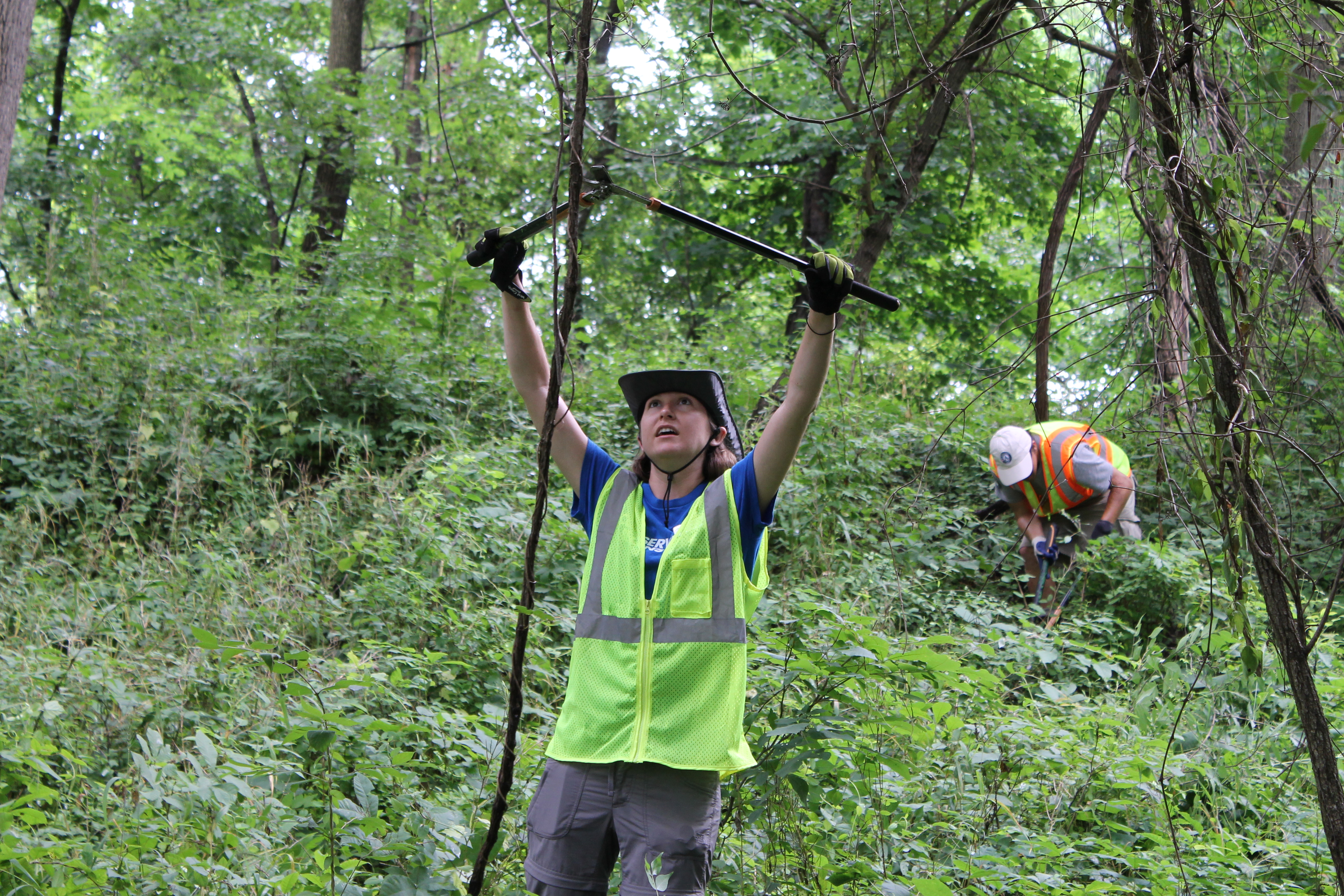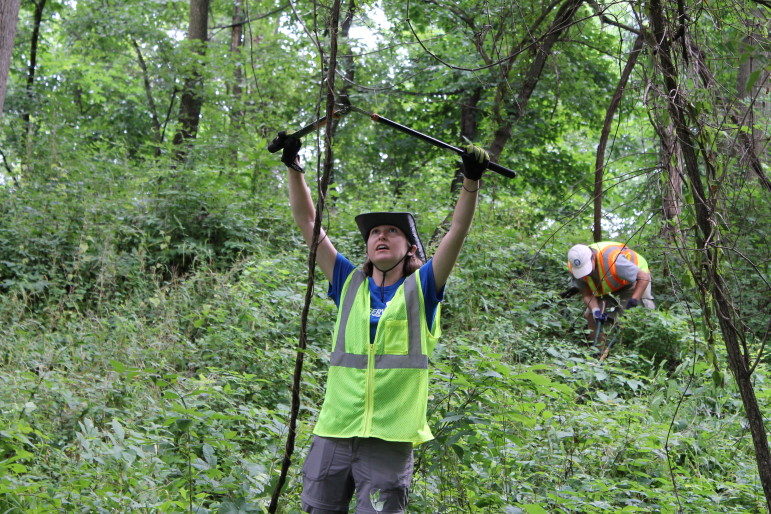
Corps Network
The Corps Network are a descendant of the Civilian Conservation Corps, created during the Great Depression. The Corps Network held its day of service last week at the Franklin Delano Roosevelt Memorial to point out and honor the connection.
With temperatures hovering around 85 degrees at midday last Friday, young people worked outside at national park sites in the nation’s capital, pulling invasive weeds in Rock Creek Park and staking trees on Daingerfield Island.
Gracie Billingsley, a rising sophomore at Northern Virginia Community College, painted stanchions, spread mulch around plants and picked up trash at the 7½-acre Franklin Delano Roosevelt Memorial on the National Mall.
It was part of a national day of service led by the Corps Network, a network of about 120 conservation corps across the nation that together marshal 23,000 young people a year.
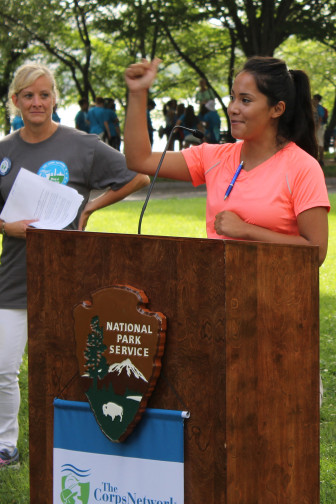
Corps Network
Gracie Billingsley speaks for the Corps Network at the Franklin Delano Roosevelt Memorial.
Billingsley had been a featured speaker that morning at a kickoff ceremony on Washington’s National Mall.
She talked about how her summer service in Colorado’s Rocky Mountain Youth Corps had changed her life.
Her crew had to accomplish some daunting tasks, she said, such as rebuilding large rock barriers to reroute the flow of water. They realized they had to get serious, pull together and support each other in the hard work.
“I learned that out in the woods,” Billingsley said.
She gained confidence in herself and also came to deeply value environmental preservation.
Organizations like Rocky Mountain Youth Corps not only hire young people to do national service projects, they provide mentoring and job training.
A lot of young people see corps service as an opportunity to get a job when jobs are lacking in the community, said Philan Tree, who was a member of the Coconino Rural Environmental Corps in Arizona in 2012. (It is now the Arizona Conservation Corps.) She helped establish the first corps on a Navajo reservation and was honored in 2012 as Corpsmember of the Year.
When young people do this kind of service, she said, the community is able to see them as assets rather than liabilities.
Opportunity for formerly incarcerated youth
A year ago the Corps Network began an initiative with funding from the Office of Juvenile Justice and Delinquency Prevention and the Corporation for National and Community Service. The goal was to reach young people who were formerly incarcerated or had been court-involved.
The initiative is known as the Opportunity Youth Service Initiative (OYSI).
Over three years, it will enroll about 600 young adults, said Levi Novey, director of communications and marketing for the Corps Network.
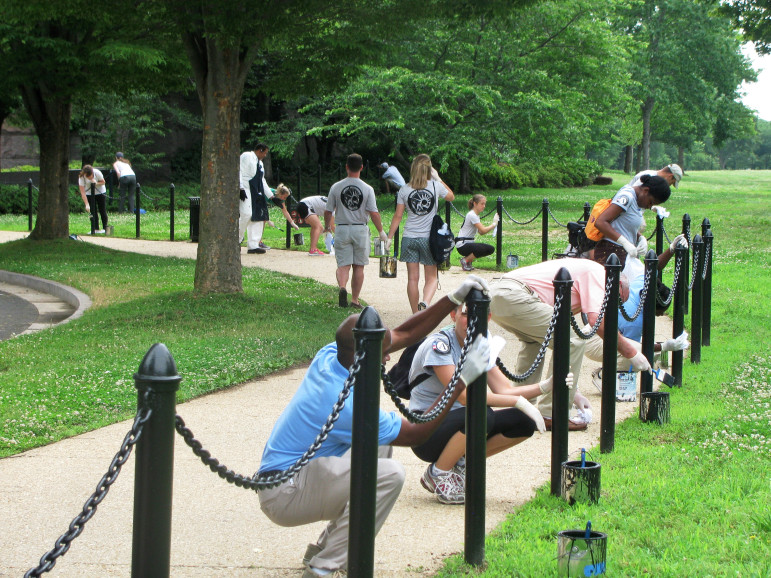
Corps Network
Twelve corps working in 13 states hired crews using this funding, he said.
One of them was the Vermont Youth Conservation Corps, headquartered in a large, picturesque red barn in Richmond, Vt..
Last year, an OYSI crew went from park to park doing construction projects, said Naomi Galimidi, development director of the Vermont Youth Conservation Corps.
The group had to figure out how to design structures differently on different sites, she said. They had to problem-solve.
“They’re building all kinds of skills in the course of that project,” she said.
An OYSI crew has just started work this summer after getting certified in chainsaw use and wilderness first aid, certifications that make them more employable, Galimidi said.
“We’re primarily a youth education organization,” she said. “It’s outdoor practical work experience.” Crews are usually equally divided between young men and young women, she said.
The Vermont Youth Conservation Corps does trail maintenance, builds structures in state parks, restores wildlife habitat, maintains watershed areas and aids in disaster recovery, such as after Hurricane Irene.
Various federal, state and local agencies — the U.S. Forest Service, the Vermont Agency of Transportation, the Nature Conservancy and others — pay for these services, providing 80 percent of corps funding, she said.
Professional credentials gained in Corps Network programs can include Occupational Safety and Health Administration certification, wildland firefighting, Building Performance Institute energy efficiency certification, hazardous materials certification and Americans with Disabilities Act Trail design certification, according to the Corps Network.
Part of the community
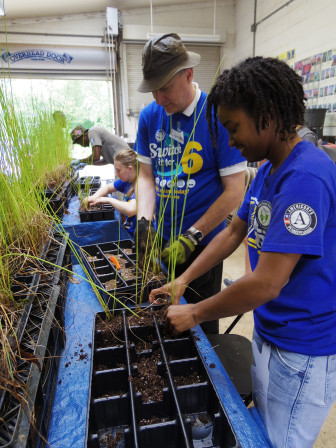
Corps Network
“Service is really a great strategy to re-engage court-involved youth,” said Mary Ellen Sprenkel, president and CEO of the Corps Network. It’s an opportunity to advance their education and gain job skills.
“It allows them to reintegrate into the community in a really positive way,” she said.
OYSI is not the first time the conservation corps have worked with formerly court-involved or incarcerated youth.
In 2005, for example, a Corps Network program, the Civic Justice Corps, sought to serve young people who had been involved in the court system, she said. It was funded mostly through the Department of Labor, and about 15 corps organizations took part.
“A number of our corps have a history of engaging these young people,” Sprenkel said.
Patrick Barnes is a geologist who runs an environmental consulting company, BFA Environmental Consultants, based in Orlando, Fla. After Hurricane Katrina in 2005, he got a contract to remove storm debris across south Louisiana from Lake Charles to New Orleans. To fulfill the contract, he ended up recruiting and training 100 workers to handle the 10-month cleanup.
Almost without missing a beat, he then created a nonprofit to continue training young adults in environmental skills.
“I decided to launch the program” Limitless Vistas, he said.
Since then Louisiana-based Limitless Vistas, a member of the Corps Network, has trained 40 to 50 young people a year.
“We are more of a workforce training program than a conservation corps,” he said.
[module type=”aside” align=”right”]Additional conservation and service corps taking part in OYSI:
- Arizona Conservation Corps
- Texas Conservation Corps
- Northwest Youth Corps
- Operation Fresh Start
- Western Colorado Conservation Corps
- Sustainability Institute
- Civic Works
Last year Limitless Vistas brought in youth through OYSI. They worked alongside 200 volunteers at the Audubon Nature Center in New Orleans to remove invasive plants. They planted more than 500 trees to help re-establish wetlands in the area, the Corps said.
Green City Force in Brooklyn, N.Y., is another corps taking part in the OYSI program. Crew members there were trained in “green” building practices and got a national credential, the GPRO Fundamentals Operations and Maintenance.
The Greater Miami Service Corps offers general education diploma classes. OYSI crew members were able to attend classes at Miami-Dade College.
Conservation corps are a descendant of the Civilian Conservation Corps, created during the Great Depression by President Franklin Roosevelt to provide work for the huge number of unemployed men across the nation.
The Corps Network held its day of service last week at the Franklin Delano Roosevelt Memorial to point out and honor the connection.
The day of service also demonstrated the important role service plays in introducing the next generation to public lands in the United States and encouraging them to care for and preserve these lands, Sprenkel said.


